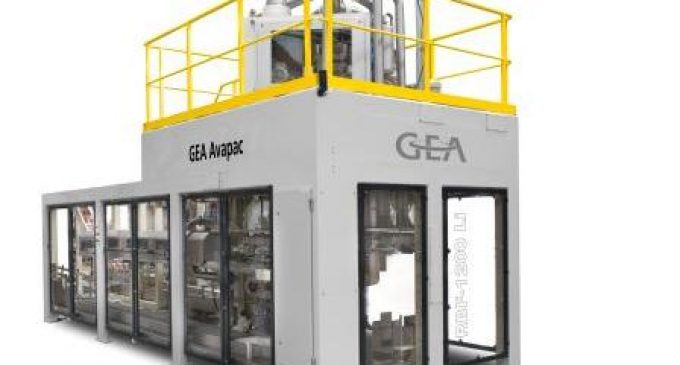GEA Gets Residual Oxygen Consistently Down to Under 2% For Milk Powder Processor

In the second quarter of 2017 GEA was awarded a complete milk powder processing plant to Open Country Dairy in New Zealand including Modified Atmosphere Packing (MAP) that consistently provides a Residual Oxygen (RO) level in the sealed 25 kilograms bags of just two percent at the time of packing. The total project value was in the lower double-digit million EUR range, of which EUR 3 million was for the MAP technology.
MAP technology ensures low residual oxygen level
Open Country Dairy is the second largest global exporter of premium whole milk powders. The company’s dairy products are valued for their quality around the world. As with all milk powders, oxygen is the adversary when the product is transported or stored awaiting final processing or retail packing. If the product is exposed to high levels of oxygen it can seriously affect its flavour and shelf life. GEA’s MAP technology ensures that the residual oxygen level in the 25-kilogramme package is sufficiently low as to prevent any significant deterioration in product quality while in transit to its key marketplaces of China and the Middle East.
This is the sixth milk processing plant GEA has supplied to Open Country Dairy in New Zealand since 2007, across four sites, each processing eight tonnes of milk powder per hour. This is, however, the first time the scope of supply from GEA has included the MAP system. Based on test results from existing MAP machines, GEA was able to show its ability to get the RO consistently down below the required level; this lower RO in the bag provides an additional benefit to the customer compared with that at the other sites. “Our system does consistently achieve the RO level required by the customer and we can demonstrate it,” says Greg Martin, Head of Application Centre Dairy Pacific for GEA.
Pre-gassing with inert gas to exclude oxygen
The key to achieving the required RO is in the process. GEA has used its RBF 1200 Li (Limited Intervention) packing line at Open Country Dairy. The system uses pre-gassing, in which the bag is filled with inert gas to exclude oxygen prior to filling. The bag is then held steady by the top thereby reducing movement and any air disturbance in the product. The bottom up filling technique prevents additional air being introduced into the product during filling and the bag sealer forces out any remaining gas on final closure.
“The new plant was a straight copy of our other five plants in New Zealand for Open Country with the addition of the MAP packing line,” says Greg Martin. “So we knew the plant would perform well for the customer right from the start and the packing line is already consistently producing very low RO levels for our customers worldwide.”
Advantages of single source supply
Using a single supplier for the whole project, such as GEA, for the entire project has many other, non-technology-based advantages for the customer: project management is simpler as all the equipment comes from a single source; accounting is easier; all items are designed to fit together as a complete system therefore each element in the plant interfaces perfectly; and lines of communication and responsibility are shorter making the whole process more efficient. “For us it means that we can take full ownership of the project for the customer and retain responsibility for achieving the KPIs,” said Greg Martin. “Working in this way is easier and cheaper for the customer in the long run.”
“GEA has previously delivered five milk powder plants for us and is now building the sixth,” says Danie Brink, Open Country Dairy’s General Manager of Operations. “Having GEA as the single supplier from milk reception to packed powder has many advantages for us. Based on GEA’s track record of delivering on their promises, the extensive data from their other MAP packing machines and GEA’s cost competitiveness; we selected GEA’s packing technology.” The new plant will come on stream in September 2018.

































